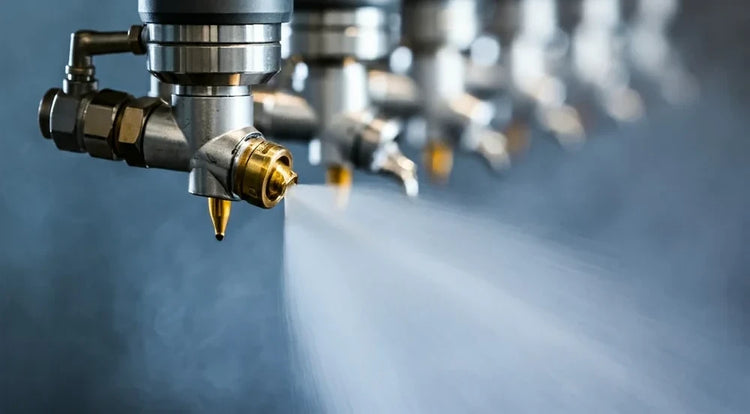Air Blowoff & Drying Nozzles for Breweries & Wineries
Professional air delivery systems that eliminate wet bottles, improve label adhesion, and reduce energy costs by up to 80% with laminar airflow technology
Why Proper Bottle Drying Matters for Your Operation
Wet bottles after washing and rinsing create cascading problems throughout your bottling line. Labels peel or bubble during application, production slows as staff manually correct adhesion issues, and your quality reputation suffers. The right air blowoff system eliminates these issues at the source—ensuring bottles are completely dry before they reach labeling or filling stages.
Label Adhesion Failures
Moisture on bottle surfaces prevents adhesive contact, causing labels to peel, bubble, or wrinkle during or after application.
Solution: Laminar AirflowProduction Line Slowdowns
Manual intervention required to fix labels and dry bottles creates bottlenecks and reduces throughput on automated lines.
Solution: Custom Air KnivesHigh Energy Consumption
Traditional compressed air systems waste significant electricity while delivering inconsistent drying results.
Solution: Blower SystemsWater Spots & Residue
Incomplete drying leaves mineral deposits and water spots that damage product appearance and shelf life perception.
Solution: Airflow OptimizationUnderstanding Air Blowoff Technology
Not all air delivery systems perform equally. The difference between effective drying and wasted energy comes down to airflow characteristics, system design, and application-specific optimization.
Laminar vs. Turbulent Airflow
Laminar airflow creates a smooth, uniform sheet of air that delivers consistent pressure across the entire bottle surface. This predictable, linear flow pattern removes water droplets efficiently without wasting energy on chaotic air patterns.
Turbulent airflow, by contrast, creates unpredictable swirls and eddies. While it may seem powerful, it wastes energy and leaves wet spots on bottles—particularly in tight areas like bottle necks and caps where uniform coverage is critical.
For brewery and winery applications, laminar airflow systems deliver superior drying consistency and measurable energy savings.
| Feature | Laminar Flow | Turbulent Flow |
|---|---|---|
| Air Pattern | Smooth sheet | Chaotic swirls |
| Coverage | Even & Predictable | Uneven & Spotty |
| Dry Spots | Minimal | Frequent |
| Energy Use | Efficient | Wasteful |
| Noise Level | Low | High |
Frequently Asked Questions
Ready to Upgrade Your Bottling Line?
Get a free system assessment and ROI calculation for your brewery or winery operation.
Request a Consultation
